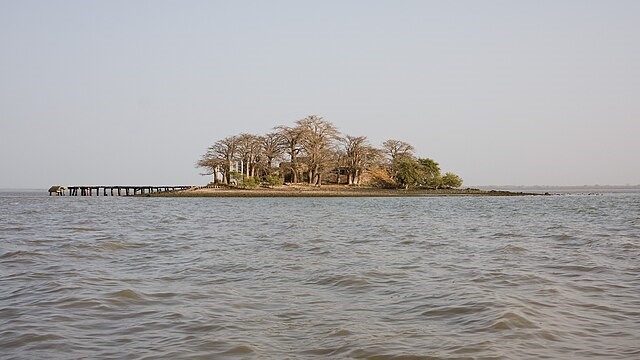The Gambia, a sliver of land enveloped by Senegal and defined by the course of its river, holds a past that belies its size. Along its shores and within its towns lie traces of civilizations and colonial entanglements that continue to shape the country’s cultural and historical identity. For centuries, this territory has been a crossroads of trade, migration, and empire, leaving behind sites that speak to both resilience and rupture.
One of the most resonant places in the national landscape is Juffureh, a riverside village tied indelibly to the story of Kunta Kinte. Immortalized in Alex Haley’s Roots, the tale of Kinte’s capture and enslavement has made Juffureh a point of pilgrimage for members of the African diaspora. Today, the village hosts a museum dedicated to his legacy, displaying artifacts and oral histories that illuminate the endurance of cultural traditions despite centuries of upheaval.
Nearby lies Kunta Kinteh Island, formerly known as James Island, designated a UNESCO World Heritage site in 2003. The island, scarred by the remnants of 17th-century fortifications, was once a hub in the transatlantic slave trade. Its crumbling walls, exposed to wind and tide, carry the weight of histories both local and global. Guided tours interpret the island’s layered past, confronting visitors with the realities of enslavement while also emphasizing the resilience of those who resisted or endured it.
Further along the river, the ruins of Fort James, constructed by the British in the late 1600s, illustrate the strategic role The Gambia played in European competition for control over trade routes and human lives. Though only fragments remain, the site underscores how colonial architecture once imposed itself on the landscape, entwining Gambian history with broader currents of empire.
In the capital, Arch 22 stands as a reminder of more recent history. Built in the 1990s to commemorate the 1994 coup that brought Yahya Jammeh to power, the towering monument overlooks Banjul’s streets and coastline. For some, it serves as a symbol of national independence and ambition; for others, it evokes a complicated legacy of authoritarian rule. Its vantage point nonetheless offers a striking panorama of the city’s growth and its continuing transformations.
Beyond these landmarks, the country’s historic sites are deeply connected to living traditions. Markets still hum with the exchange of goods and stories, and festivals echo practices that predate colonialism. Oral historians—griots—recount genealogies and events, linking present-day Gambians to ancestors who navigated the challenges of empire, trade, and modern nationhood.
The Gambia’s historical landscape is best encountered during the dry season, from November to March, when roads are more passable and the climate permits extended exploration. Yet regardless of the time of year, the impression left by these places endures. Together, they reveal a nation whose history cannot be reduced to its borders: a land where memory, tradition, and survival have shaped both its people and its role in the wider world.


